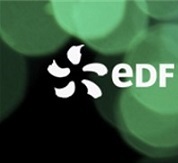Complex maintenance programs quantification (CMPQ) to better control production systems
Résumé
Purpose - The purpose of this paper is to develop a methodology for supporting Complex Maintenance Programs Quantification (CMPQ) for industrial systems. The methodology is based on a generic formalization of static and behavioural expert knowledge both on the target system and on the maintenance one. The formalization is carried out first by means of SysML diagrams to model knowledge concepts and second by the transformation of these concepts into Altarica Data Flow (ADF) language for developing stochastic simulation Design/methodology/approach - An industrial case study (ARE system) proposed by the EDF company is used initially to show a real problem statement on CMPQ. It allows highlighting key scientific issues considered as the basis for methodology development. Main issues are related to static and dynamic knowledge formalization justifying the choice of SysML and ADF languages. The added value of this methodology is finally shown on the same case study serving as benchmark Findings - This paper demonstrates the suitability of using of SysML language for modelling the CMPQ knowledge and then of ADF language in building executable model implementing simulation as needed for assessing Key Performance Indicators of CMPQ. ADF is based on formal mode automaton. Mapping rules are developed to ensure correspondence between the concepts of these two languages. Research limitations/implications - Additional industrial validations of the methodology should be performed to really evaluate its benefits Practical implications - This work was made possible thanks to a partnership with the EDF Company (French energy supplier). The results are therefore directly usable at practical industrial levels. Originality/value - The CMPQ methodology proposed is fully generic leading to offering a library of atomic ADF components (COTS) which can be instantiated to develop executable model with regards to each specific application. It allows to favor re-usability and makes easier the model development above all for a user who knows nothing about the language.

